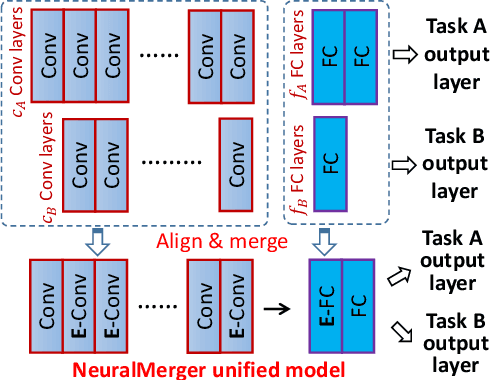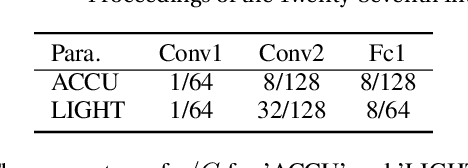Jia-Hong Lee
Part-Aware Measurement for Robust Multi-View Multi-Human 3D Pose Estimation and Tracking
Jun 22, 2021



Abstract:This paper introduces an approach for multi-human 3D pose estimation and tracking based on calibrated multi-view. The main challenge lies in finding the cross-view and temporal correspondences correctly even when several human pose estimations are noisy. Compare to previous solutions that construct 3D poses from multiple views, our approach takes advantage of temporal consistency to match the 2D poses estimated with previously constructed 3D skeletons in every view. Therefore cross-view and temporal associations are accomplished simultaneously. Since the performance suffers from mistaken association and noisy predictions, we design two strategies for aiming better correspondences and 3D reconstruction. Specifically, we propose a part-aware measurement for 2D-3D association and a filter that can cope with 2D outliers during reconstruction. Our approach is efficient and effective comparing to state-of-the-art methods; it achieves competitive results on two benchmarks: 96.8% on Campus and 97.4% on Shelf. Moreover, we extends the length of Campus evaluation frames to be more challenging and our proposal also reach well-performed result.
Data-specific Adaptive Threshold for Face Recognition and Authentication
Oct 26, 2018



Abstract:Many face recognition systems boost the performance using deep learning models, but only a few researches go into the mechanisms for dealing with online registration. Although we can obtain discriminative facial features through the state-of-the-art deep model training, how to decide the best threshold for practical use remains a challenge. We develop a technique of adaptive threshold mechanism to improve the recognition accuracy. We also design a face recognition system along with the registering procedure to handle online registration. Furthermore, we introduce a new evaluation protocol to better evaluate the performance of an algorithm for real-world scenarios. Under our proposed protocol, our method can achieve a 22\% accuracy improvement on the LFW dataset.
Joint Estimation of Age and Gender from Unconstrained Face Images using Lightweight Multi-task CNN for Mobile Applications
Jun 06, 2018



Abstract:Automatic age and gender classification based on unconstrained images has become essential techniques on mobile devices. With limited computing power, how to develop a robust system becomes a challenging task. In this paper, we present an efficient convolutional neural network (CNN) called lightweight multi-task CNN for simultaneous age and gender classification. Lightweight multi-task CNN uses depthwise separable convolution to reduce the model size and save the inference time. On the public challenging Adience dataset, the accuracy of age and gender classification is better than baseline multi-task CNN methods.
Unifying and Merging Well-trained Deep Neural Networks for Inference Stage
May 14, 2018



Abstract:We propose a novel method to merge convolutional neural-nets for the inference stage. Given two well-trained networks that may have different architectures that handle different tasks, our method aligns the layers of the original networks and merges them into a unified model by sharing the representative codes of weights. The shared weights are further re-trained to fine-tune the performance of the merged model. The proposed method effectively produces a compact model that may run original tasks simultaneously on resource-limited devices. As it preserves the general architectures and leverages the co-used weights of well-trained networks, a substantial training overhead can be reduced to shorten the system development time. Experimental results demonstrate a satisfactory performance and validate the effectiveness of the method.
 Add to Chrome
Add to Chrome Add to Firefox
Add to Firefox Add to Edge
Add to Edge